TL;DR: How to Create an Email Newsletter
- Pick a reliable email service provider (ESP) like Constant Contact or HubSpot
- Use a mobile-friendly template that matches your brand and goals
- Create a segmented email list with clear opt-in forms
- Follow compliance rules like GDPR and CAN-SPAM
- Write value-packed content with a strong CTA
- Send and track your first email to optimize results
Pro Tip: You can automate the entire process and keep growing your list on autopilot with tools like OptinMonster.
Do you know how to create a newsletter that will keep your subscribers engaged and turn them into loyal customers?
Email newsletters are a vital part of your business’s growth. They give you direct access to your target audience and allow you to keep in touch with all of your leads.
At OptinMonster, we have poured a lot of hard work into building an email list of over 235,000 people who subscribe to our email newsletter:

Thanks to the newsletter, we have been able to build strong customer relationships, cut down our marketing costs, and drive measurable results.
If you are considering starting an email newsletter, you don’t really have to spend hours every week setting them up. Most email service providers (ESP) allow you to automate these campaigns.
That means you can grow your contact list and send personalized emails that generate more revenue while you’re sleeping.
That’s why, in today’s tutorial, I’m going to show you how to create a newsletter in just 7 easy steps.
Here’s everything I’ll cover in this blog:
Before we get into the weeds of how to start a newsletter, let’s first discuss why you need one.
Why Do You Need an Email Newsletter?
An email newsletter is a type of email that shares content such as product news, announcements, blog posts, tips, and other resources that are valuable for the subscribers.
The newsletter subscribers are usually existing customers or leads who have opted in for the email. They have expressed interest in receiving marketing communications from a company or individual.
But more than anything else, you need to know why email newsletters are so important for growing your business.
Email newsletters have many advantages. They allow you to:
- Build long-term relationships: Newsletters help you stay connected with your core audience and build stronger relationships. You can share valuable content, industry insights, and exclusive offers to keep your subscribers engaged.
- Run cost-effective campaigns: Compared to other marketing channels like paid ads, email newsletters are extremely cost-effective. For example, you can use the same newsletter template to send thousands of emails.
- Communicate directly with your audience: Newsletters go straight to your subscribers’ inboxes, putting your message right in front of an audience group that is interested in buying from you.
- Sharpen your targeted reach: You can segment your email list and send targeted and personalized content to different groups of subscribers based on their interests or demographics. This increases the relevance of your message and improves engagement.
- Increase brand awareness: Every time a subscriber shares the content of your newsletter in their network, it triggers word-of-mouth marketing for your brand. This helps you boost your brand awareness and establish yourself as a thought leader in your industry.
- Drive website traffic: Newsletters are a great way to drive traffic to your website. You can include links to your latest blog posts, product pages, or landing pages in your newsletter.
- Boost sales: Newsletters can be used to promote your products or services, offer discounts, and drive sales, especially during the holiday sales season such as Black Friday and Cyber Monday.
- Drive measurable results: With email marketing tools, you can track the open rates, click-through rates, and other metrics of your newsletter campaigns. This data helps you understand what’s working and what’s not, so you can improve your future newsletters.
At the end of the day, email newsletters will help you get what you’re really after: higher conversions.
Woodside Community, a South Carolina-based private living community, used OptinMonster to grow its newsletter subscription. Within 2 months of starting the campaign, they generated over $294,435 in revenue!
Read more about it in our case study: How Woodside Communities Made $294,435 in 2 months with OptinMonster.
That’s the power of a well-crafted email newsletter strategy. Woodside did it all with this basic popup campaign:
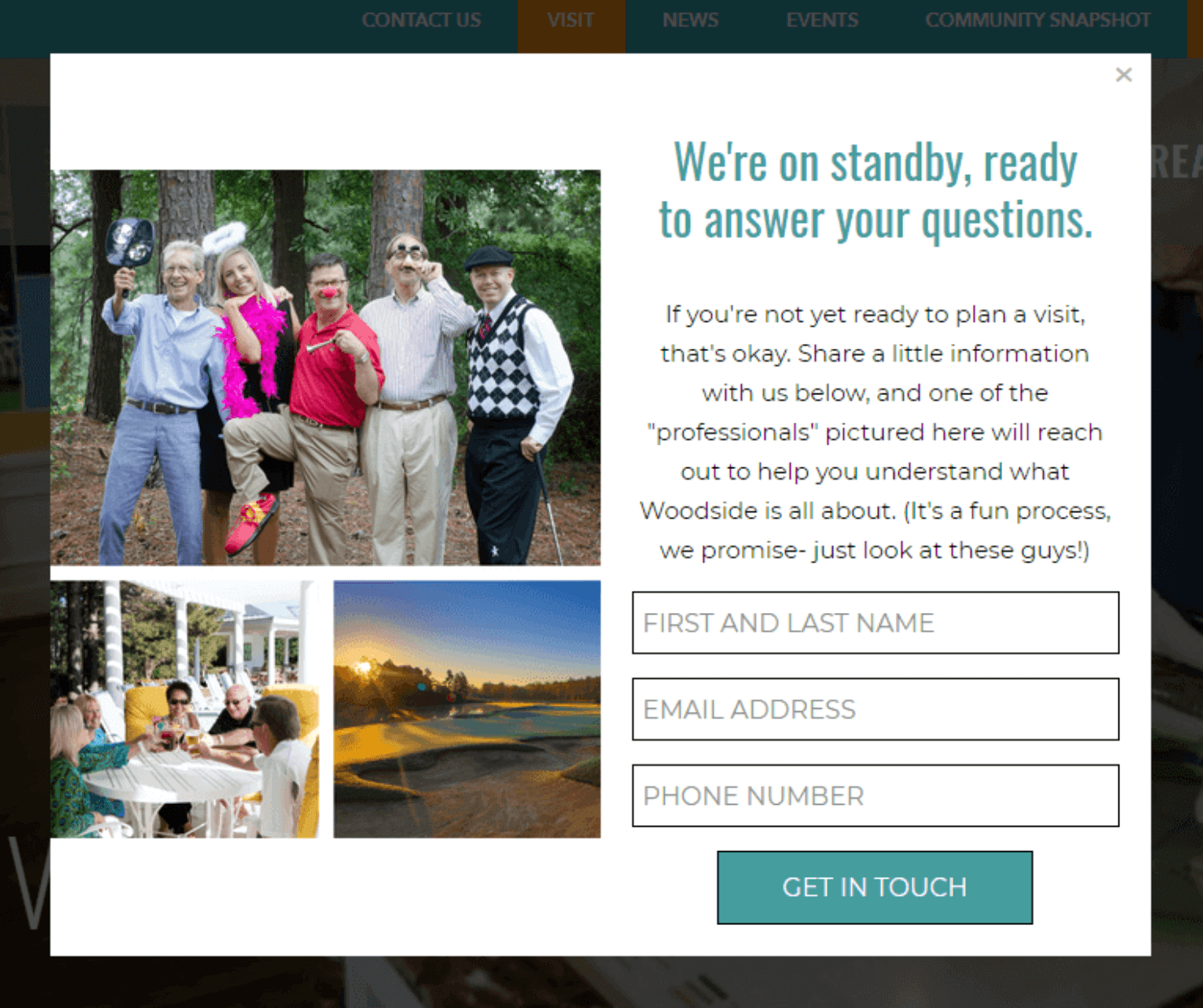
Now that you understand what a newsletter is and why it’s so important, let’s learn how to make an email newsletter.
Before You Create an Email Newsletter, You Need a List
No email list = no newsletter.
You can have the best newsletter in the world, but if no one’s on your list, no one’s going to see it.
At OptinMonster, we’ve helped thousands of businesses build their first (and next) 1,000 subscribers using powerful on-site campaigns. So before you even touch a template or choose an email tool, you need to make sure you’re collecting emails the right way.
Here’s a quick-start plan to build your email newsletter list:
1. Create a Lead Magnet: Offer something valuable like a free guide, checklist, or discount code.
2. Use a High-Converting Optin Form: Embed popups, slide-ins, or floating bars using tools like OptinMonster.
3. Segment Your List from Day One: Use tags or groups like “blog subscribers,” “buyers,” or “freebie downloaders.”
4. Embed Forms Everywhere: Place signup forms on your homepage, blog posts, exit-intent popups, and landing pages.
5. Make It Easy to Say Yes: Use a clear CTA and keep your form short — name and email is enough to start.
How to Create a Newsletter
- Step 1: Choose the Right Email Service Provider
- Step 2: Choose an Email Newsletter Template
- Step 3: Create an Email List
- Step 4: Be Aware of the Legal Compliances
- Step 5: Write Your Email Newsletter Content
- Step 6: Send Your First Email Newsletter
In this section, I’ll take you through the step-by-step tutorial on how to create a newsletter.
We’ll start by selecting the right ESP. That way, you can get started on the right foot and build an automated process that lasts you for years to come.
Step 1: Choose the Right Email Service Provider
The first thing you need to do is determine which ESP you’ll work with.
Look for a tool that allows you to scale so you don’t need to change platforms as your requirements grow.
Here are some must-have features that you should prioritize when you are shortlisting an ESP:
- List Management: Make sure the ESP lets you easily manage your contact list, segment lists, rearrange groups, and send and track customized messages. Good list management is the foundation for successful email automation. It helps you reach the right audience, with the right content, and at the right time.
- Easy-to-Use Editor: Choose an ESP that’s user-friendly and readily integrates with your lead generation tools. You don’t want to spend hours wrestling with complex software that requires you to manually connect with other tools in your tech stack.
- Email Automation: A good ESP will allow you to set up automated email sequences to welcome new subscribers, recover abandoned carts, or other marketing campaigns.
- In-Depth Reporting: Choose a tool that lets you use a data-driven approach to email marketing. Having access to your campaign performance can help you refine your campaign strategy for better impact.
- Compliance: Most commercial email marketing software will already be compliant with email laws like CAN-SPAM and GDPR. But it’s best to check the laws specific to your country.
If you already are using an ESP that checks all the boxes, that’s great!
You can click here to skip directly to Step #2.
At OptinMonster, we have used a wide variety of ESPs along different stages of our company’s growth. If you want advice on the best ESPs, here are some of our favorites that you can consider:
1. Constant Contact
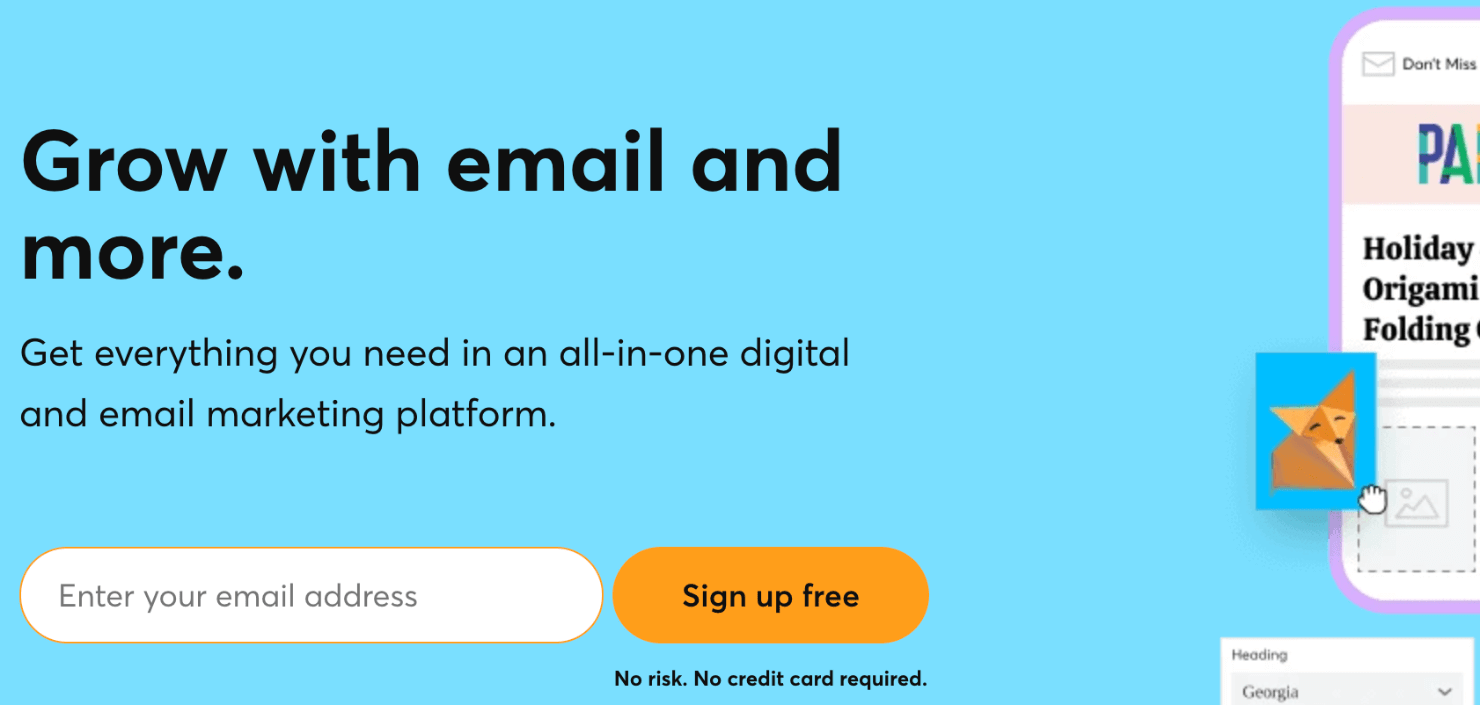
Constant Contact offers an easy-to-use, lightweight interface and is great for both big and small businesses. As one of the largest email marketing services in the world, Constant Contact offers great deliverability rates and highly-rated support with every plan.
You can use their drag-and-drop editor and ready-to-use email newsletter templates to create and send professional emails.
These newsletter template emails are designed to work with a wide range of email clients and apps such as Outlook, Gmail, or Apple Mail. You can even send automated emails to new subscribers.
Plus, the emails are responsive, so they look great on mobile devices and desktops.
Constant Contact is one of our favorites because it’s the most beginner-friendly and the easiest to use, but it doesn’t skimp on the features.
With Constant Contact, you get an email marketing platform that’s easy to use and includes powerful marketing tools like a free image library, Facebook ads integration, eCommerce integration for Shopify stores, built-in social media sharing tools, and list segmentation.
Get started with Constant Contact today!
2. HubSpot

HubSpot Email Marketing offers some of the most powerful analytics along with an intuitive and easy-to-use interface for non-tech users.
Start by creating beautiful, on-brand emails with the drag-and-drop editor. You can customize your emails by adding call-to-action (CTA) buttons, colors, images, social icons, and text while ensuring they are responsive on all devices.
You can also segment your email lists to target specific viewers, like returning customers or new customers. Or, you can schedule emails to optimize your open and click-through rate.
With OptinMonster, you get access to detailed analytics on how your campaigns perform and the option to carry out A/B testing to optimize your newsletters further.
Get started with HubSpot today!
3. Brevo (formerly Sendinblue)
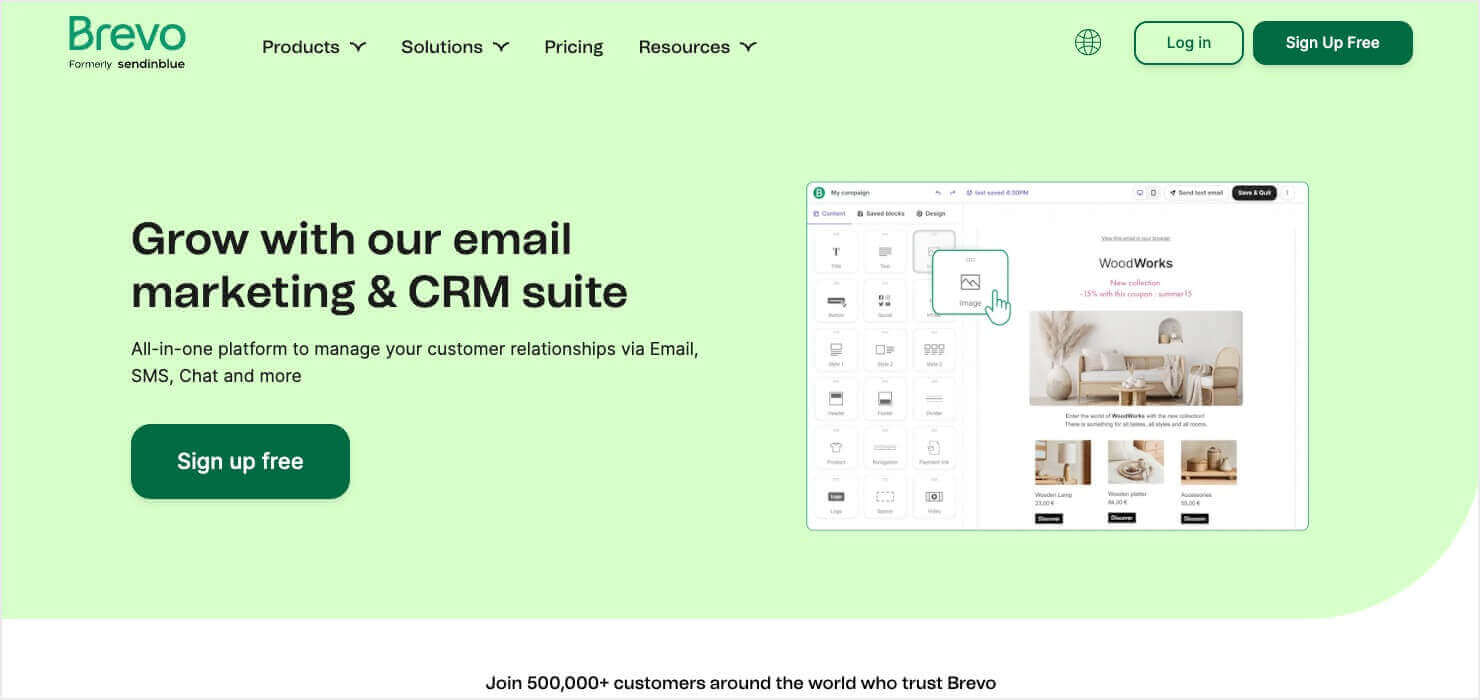
Brevo (formerly Sendinblue) is a powerful email marketing tool with minimal startup costs that gives free users an unlimited number of contacts.
It comes with great features like automation workflows, autoresponder campaigns, segmentation tools, and A/B testing.
Brevo also includes in-depth reporting and real-time stats, so you know how your campaigns are doing.
You can create email newsletters that are stunning and optimized to look great on every device.
4. Drip
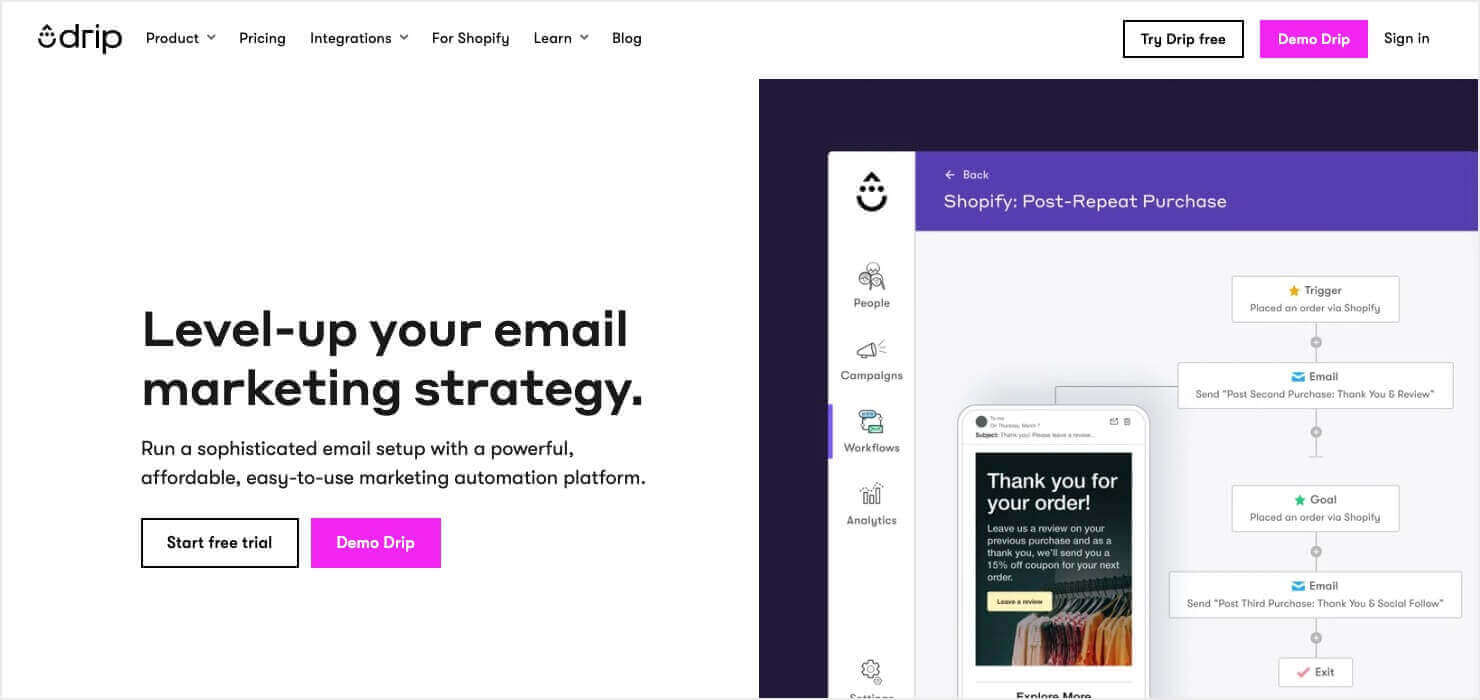
Drip is another excellent email service provider that you can choose from.
You can keep your contact list stored with Drip and create email campaigns. When new users sign up, you can tag, segment, or add the new user groups to an automated email series.
Over time, you can refine your email marketing strategy and put everything on autopilot. As new leads come in, they’ll get new emails that nurture the relationship until they become customers.
DripGet started with Drip today!
Alternatives: Mailchimp, MailerLite, ConvertKit
Once you have selected your email service provider, you are ready to create your first newsletter. To do that, let’s set up your email list.
For this tutorial, we’ll be using Constant Contact.
Step 2: Choose the Right Email Newsletter Template
All of the ESPs that I have recommended earlier come with plenty of email newsletter templates for you to build your email campaigns. You should choose a template based on your audience’s preferences, your brand style, and your newsletter’s theme.
Consider the following tips when you are choosing an email newsletter template:
Consider Your Audience and Goals
Be clear about what your audience prefers. For instance, a template for a tech company might not resonate with a yoga studio’s audience. No matter which template you choose, tailor its design to align it with your audience’s interests.
Also, think about what you expect out of your audience. What is it that you want them to do? Will you be offering tips to grow your customers’ businesses, sharing industry news, or offering occasional discounts?
The template should guide them toward that action.
Focus on Functionality and Design
Research shows that over 60% of email opens are from mobile devices.
That means your email newsletter templates should be mobile-friendly and compatible with Android, iOS, and other mobile operating systems.
Also, make sure that the template is eye-catching and scannable. Most people skim through emails. Use clear sections, fonts, headings, and bullet points to break up text.
Think About Content and CTAs
Any template you choose should allow you to add or delete text, images, videos, and CTA buttons as per your requirements.
Yes, you should prioritize keeping your newsletter design as simple as possible. But the email newsletter templates you choose should also be flexible to adapt to your changing needs.
Finally, test and iterate. You can send test emails to yourself or your colleagues to see how the template renders on different devices. And then you can make tweaks based on what works best.
Step 3: Create an Email List
In this step, I’ll show you how you can send your first email newsletter using Constant Contact. If you don’t already have an account, you’ll need to sign up.
An email list is just what it sounds like: a directory of all the subscribers who sign up to receive your email newsletter.
When people enter their email addresses into an email subscription form, their names are added to your email list. So let’s make sure those names have somewhere to go!
First, log into Constant Contact.
Click on Contacts in the top menu and make sure you’re on the Lists tab. Click the Create List button on the far right:

Next, enter a name for your list in the popup that appears.
Subscribers won’t see this name, but make sure it’s something you can easily recognize, such as, ‘Holiday Promotions List’ or ‘Lead Magnet Subscribers.’
Click Save once you are done.
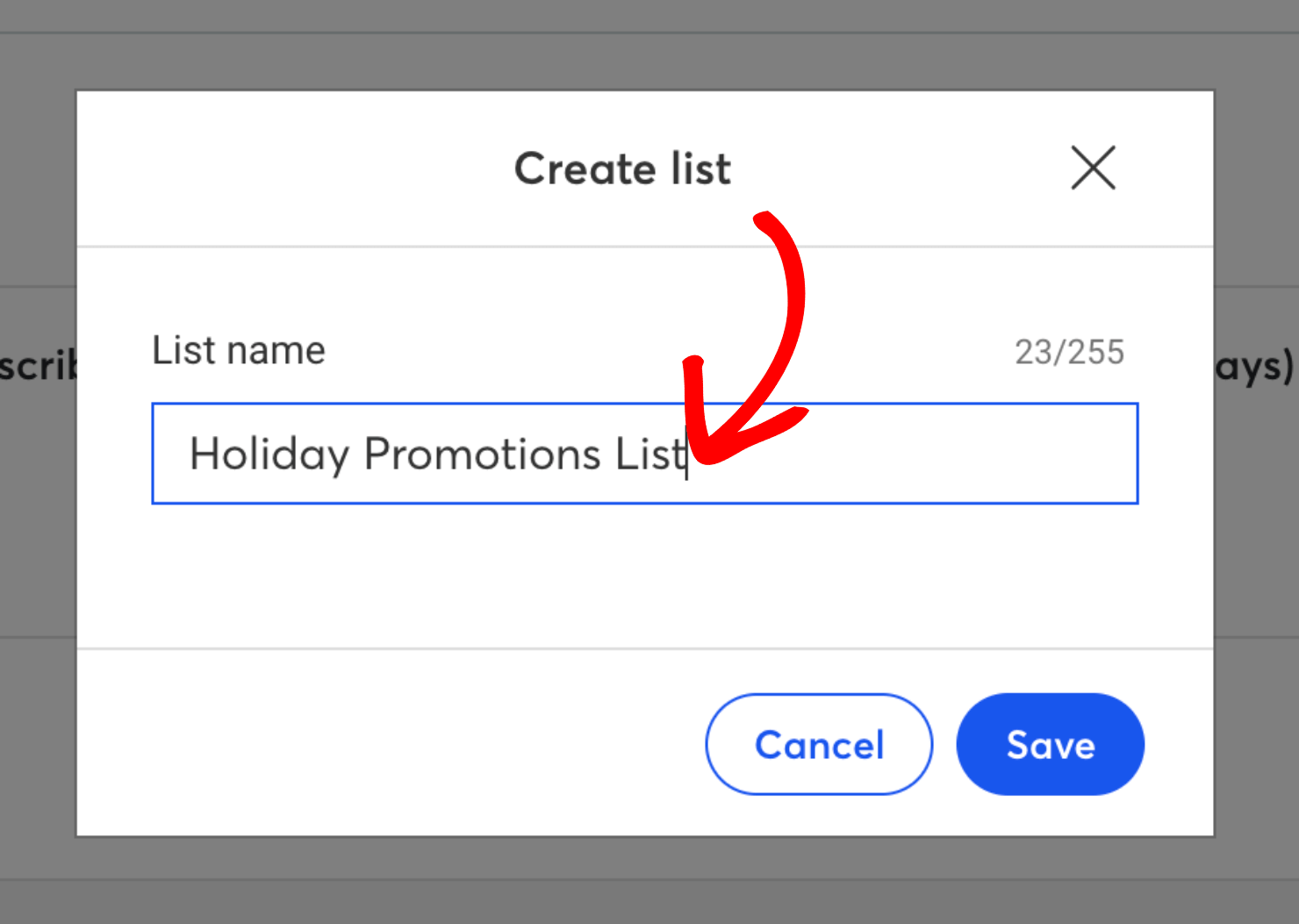
You’ll need to add at least one contact to start using this email list. You can add your own email address to test that your newsletters are sending properly.
To add email addresses, click on the Add Contacts button on the top-right of the screen:
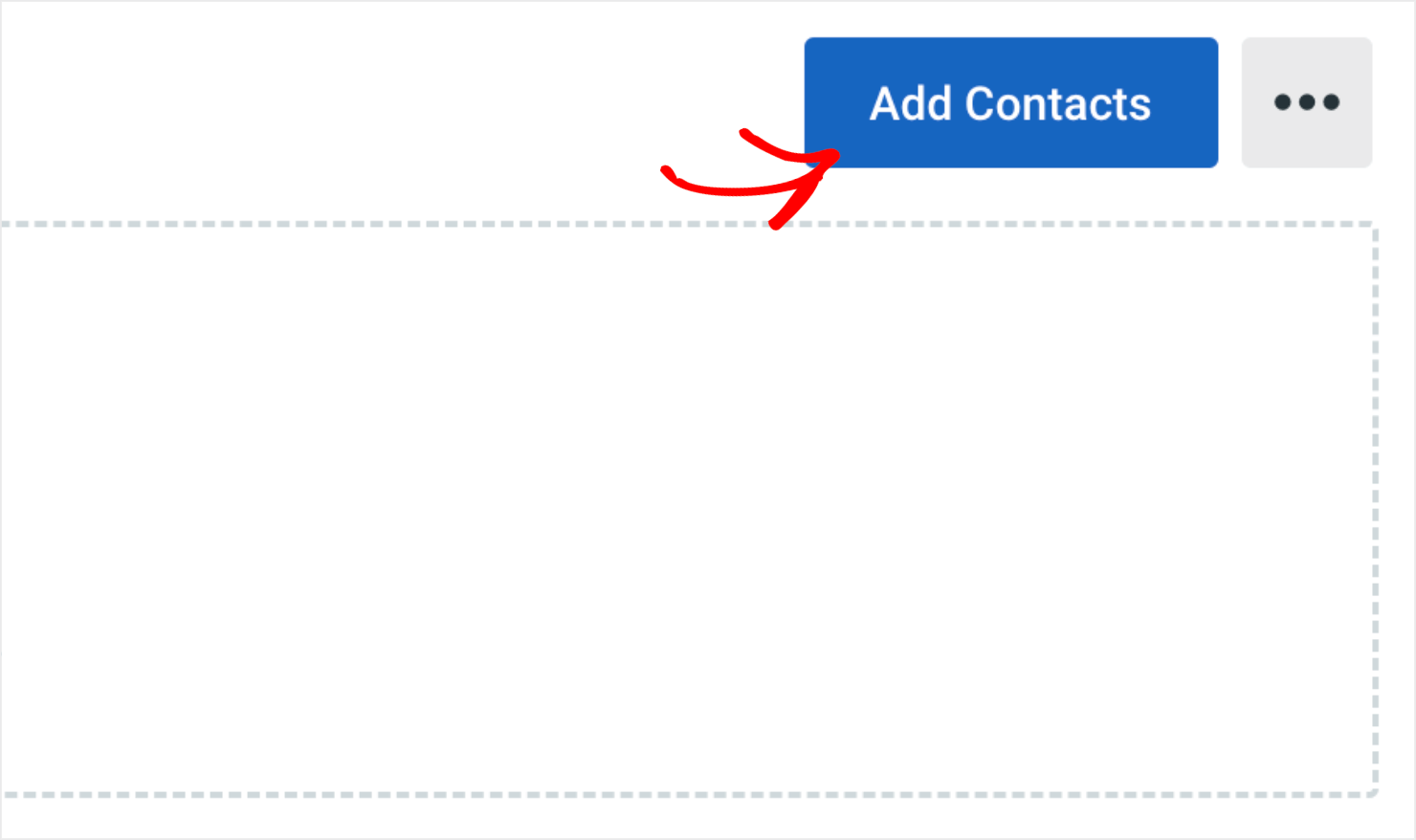
Choose how you want to add your contacts. I’ll go with the Create a new contact option:

Enter your email address and click Continue:
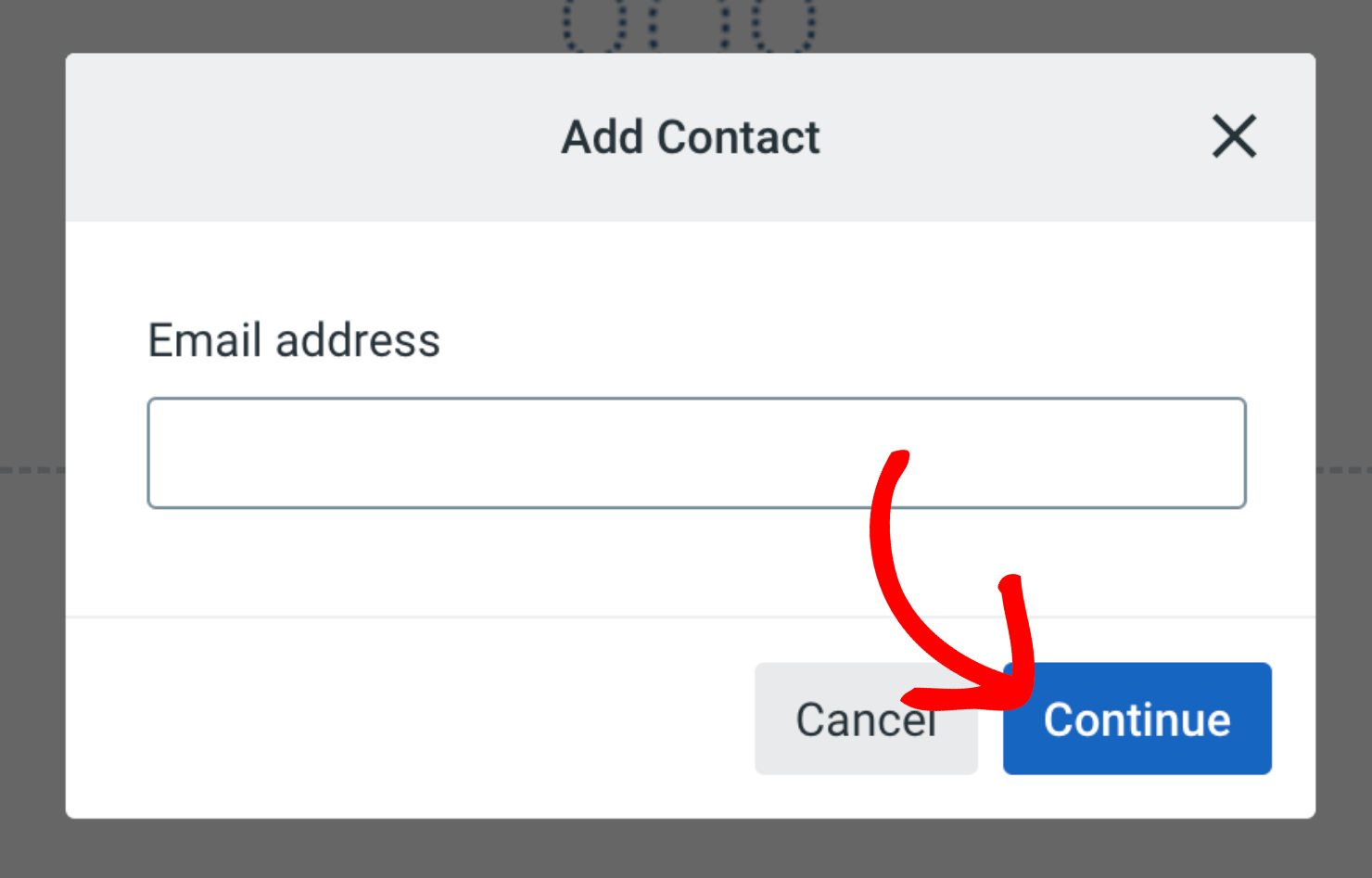
On the next screen, add any other contact details you need. I recommend putting at least a first and last name. Make sure to double-check the email list you just created:
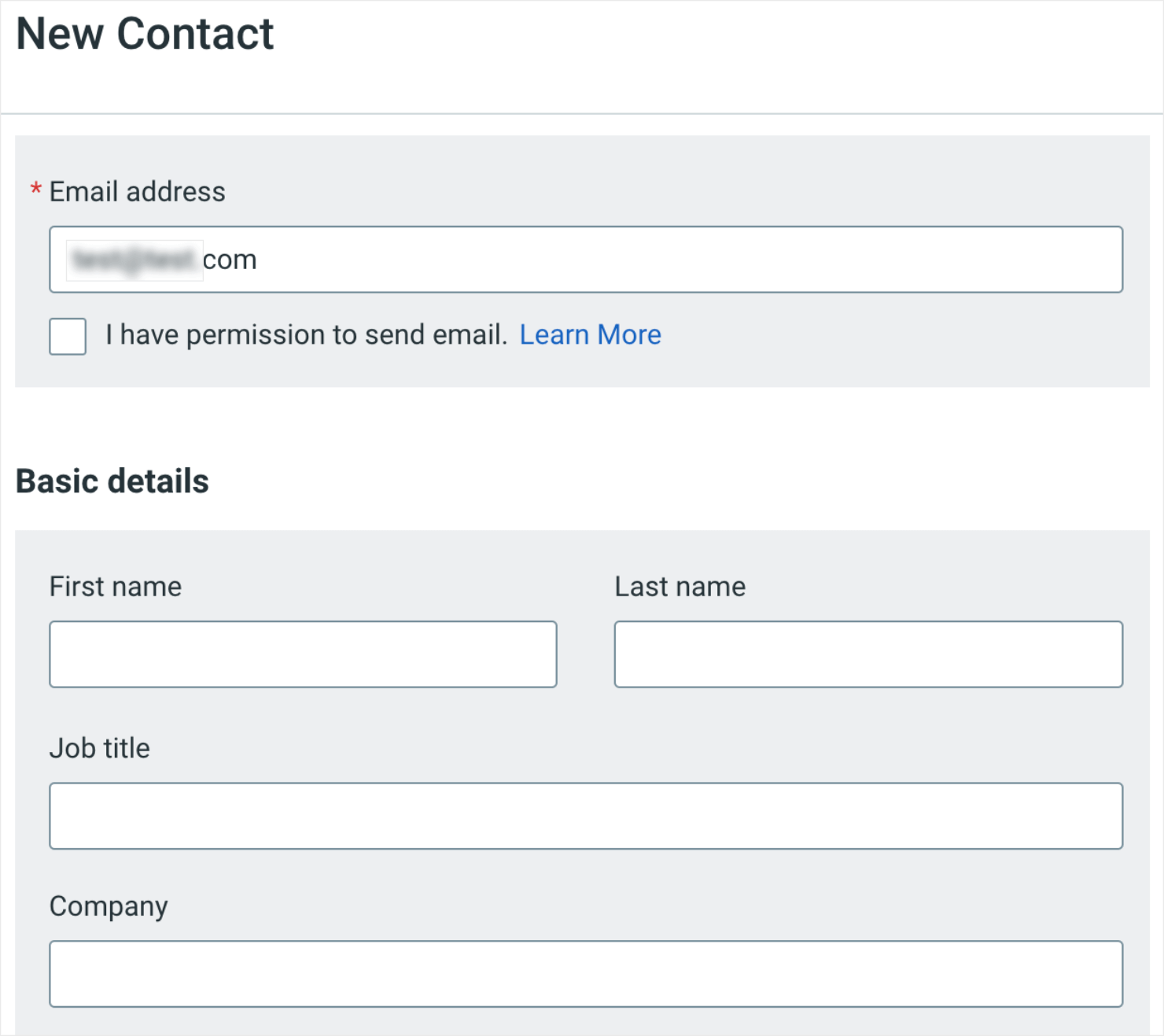
And that’s it! You just created your 1st email list in Constant Contact.
Next, let’s go over how to craft the perfect email content to pull your subscribers in and get them to convert.
Step 4: Be Aware of the Legal Compliances
If you breach data privacy laws in regions where your business operates, it might lead to hefty fines, damaged reputation, and even lawsuits.
Eyewear retailer Luxottica owns global brands like Oakley and Sunglass Hut. In April 2024, the company had to pay a $1,512,500 fine for sending more than 200,000 marketing messages in violation of Australian spam laws.
There are a few key legal compliances to consider before hitting send on your email newsletter. These will primarily focus on subscriber consent, transparency, and giving users control over their information.
Here’s a quick breakdown of such compliances:
- Ask for consent: Make sure you have explicit optin consent from recipients to receive your emails. Avoid pre-checked boxes or bundling signups with other services.
- Maintain full transparency: Accurately identify your business. This is to ensure that the sender’s information is explicitly clear. Also, clearly label the email newsletter as a marketing communication for full disclosure. Finally, Include your valid physical postal address in the email content to comply with industry rules.
- Offer easy unsubscribe Options: Make it easy for people to unsubscribe or change their email preferences. Yes, it’s not easy to see your subscribers go. But it’s better to make that process easy than to have annoyed subscribers reporting you for spam.
These are general guidelines, but specific regulations may vary depending on your location. Here are some prominent ones to consider:
- CAN-SPAM (US): The Controlling the Assault of Non-Solicited Pornography And Marketing Act sets compliance standards for commercial emails in the United States.
- CASL (Canada): Canada’s Anti-Spam Legislation outlines similar rules for email marketing with a focus on transparency and opt-out options.
- GDPR (EU): The General Data Protection Regulation in the European Union sets stricter data protection standards, including obtaining explicit consent for data use.
If you want more information on how to make your newsletter legally compliant, I strongly recommend you consult with a legal professional. They are familiar with email marketing regulations in your region.
Step 5: Write Your Email Newsletter Content
Content is the most important part of an email newsletter. Even if you have a beautiful email newsletter template, your subscribers will unsubscribe if you send them boring, irrelevant, or overly promotional content.
Here are some pointers on how to craft the perfect content for your email newsletter:
- Identify the main purpose of your newsletter as well as your overall email marketing strategy. Are you trying to get new clients? Share affiliate links? Sell new products? What you write will depend on what your purpose is.
- Get to the point clearly and quickly. From the email subject line to the headers in the email content, every sentence should have a purpose. Each of them should deliver value to your audience, tell them what to expect, or call them to take action.
- Help the readers meet their goals. Readers don’t subscribe because they want to help you meet your goals. They want your help meeting their goals. In an ideal world, you can meet your own goals by helping them meet theirs. Create informational content that helps people solve their problems while encouraging them to take the action you want.
- Pick 1 main CTA. What do you want readers to do after they read your newsletter? Maybe you want them to click a link to a sales page or your social media accounts. Or maybe you want them to write a response back to you. Don’t be shy about asking them to take this step!
Here are some of the best email newsletter examples you can look at for inspiration. Once you have your newsletter content written, you can send your newsletter.
Step 6: Send Your First Email Newsletter
To send your newsletter, you’ll once again need to go back to Constant Contact since that’s where you have stored your campaign details and email addresses.
Log into Constant Contact. Then click on the Marketing tab and select Create an email from the dropdown:

With this, you’ll now have the option to choose from several ready-to-use newsletter template emails:
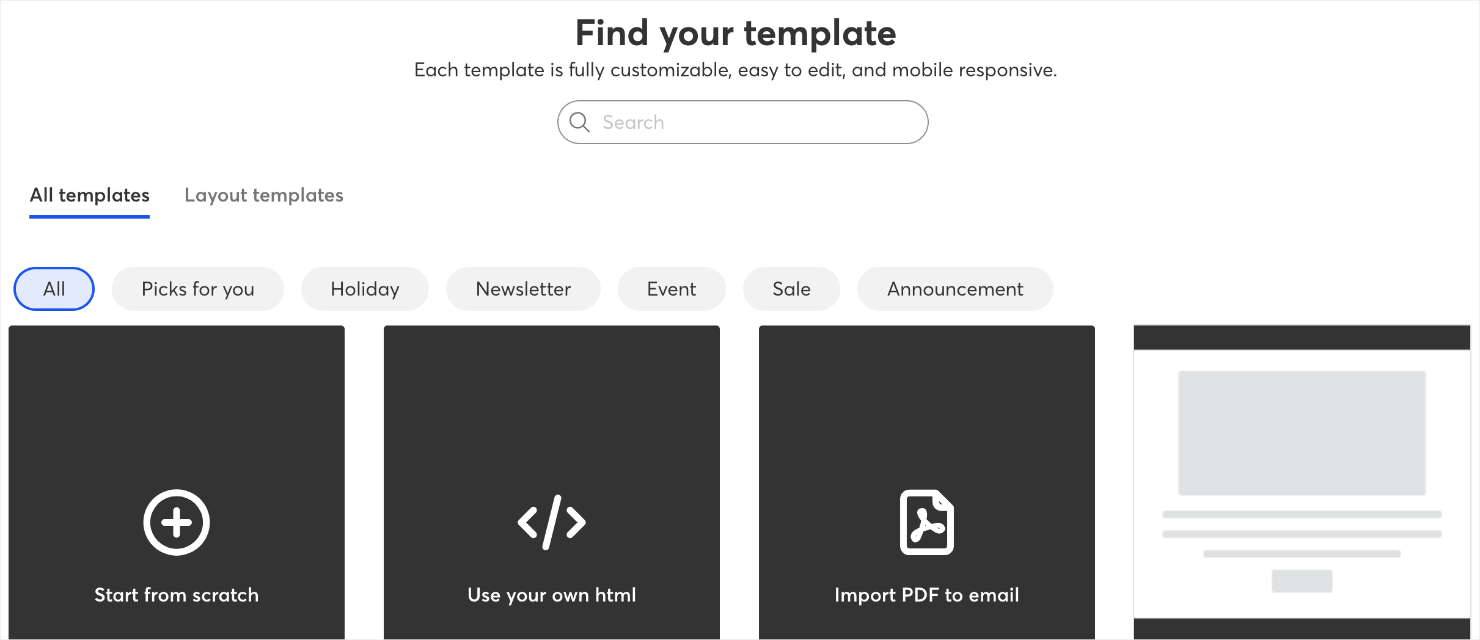
You can search for the right kind of templates and hover over the one you like and click Select:
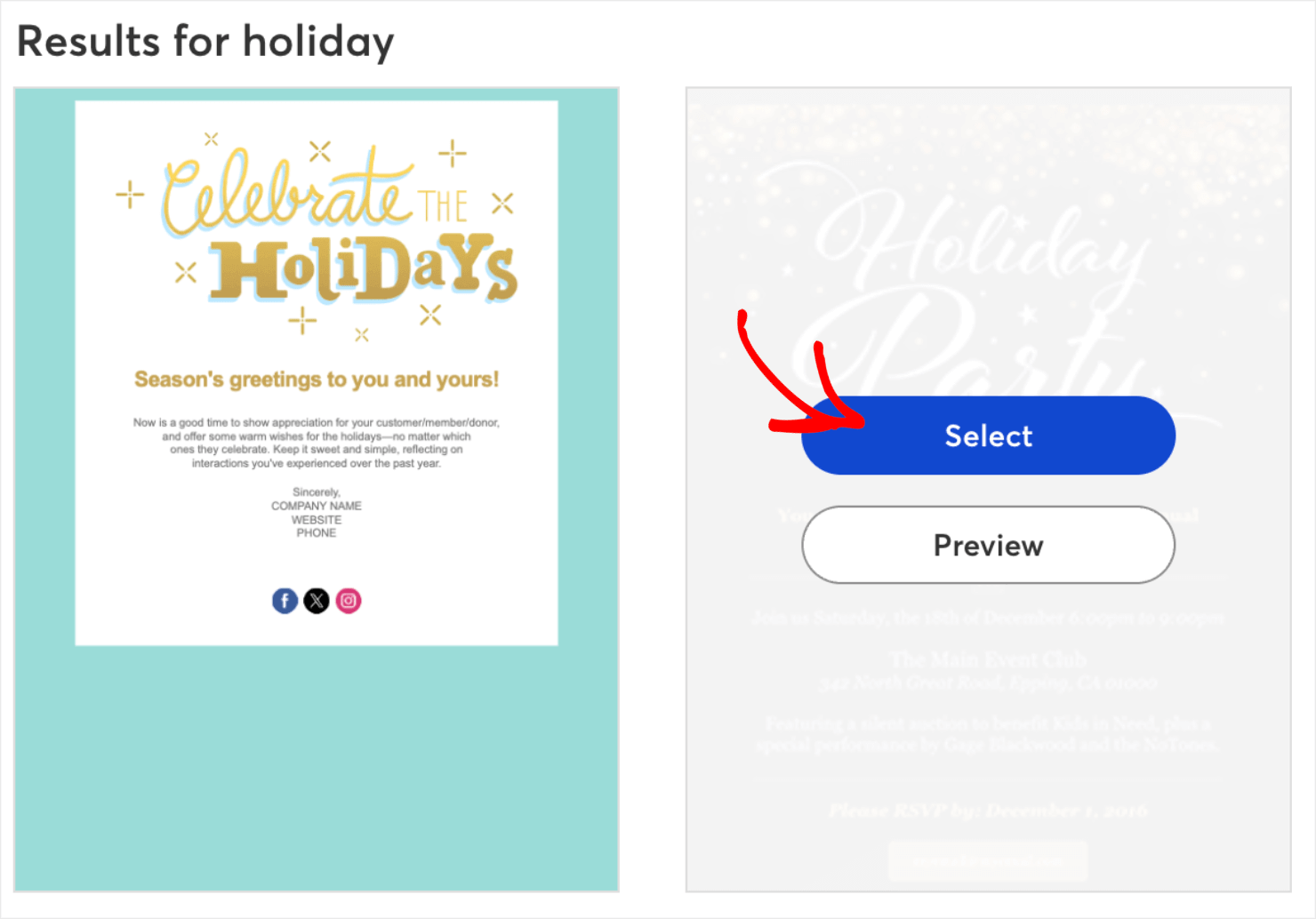
Once you’re in the email builder, editing your newsletter is simple.
You can change the text directly in the campaign. Or you can add new features to your email using the Block elements on the left-hand side menu:
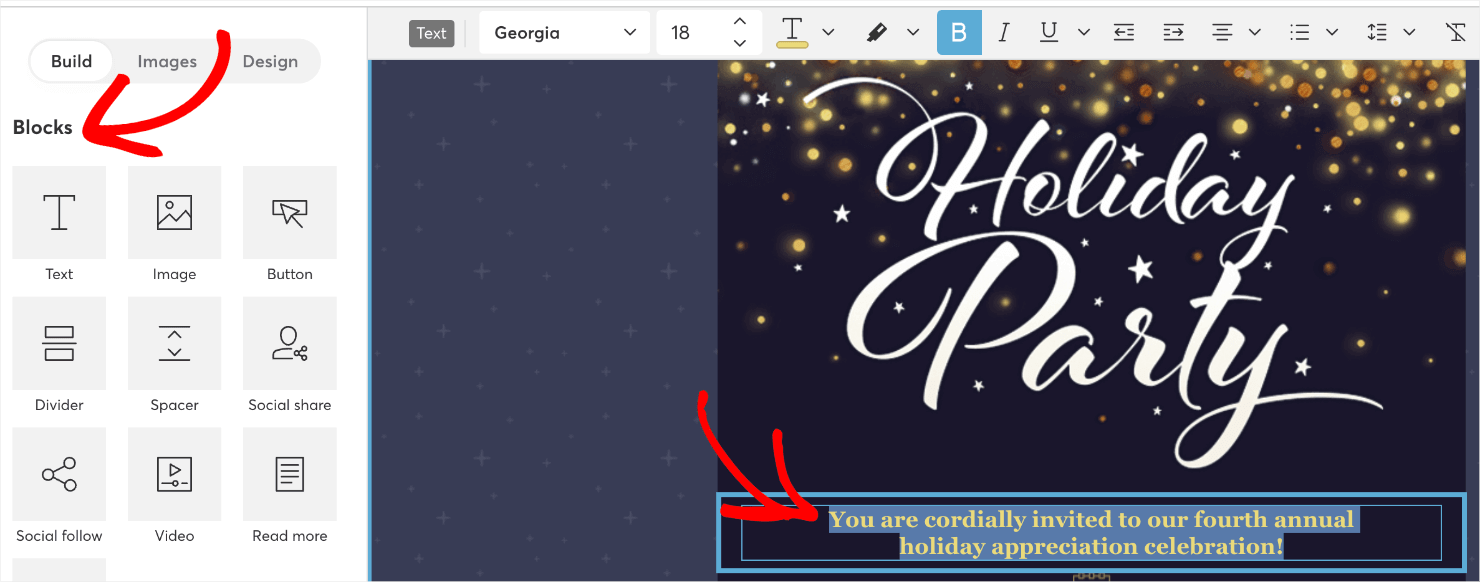
Then you can simply drag and drop them into place.
The best part? There’s zero coding, zero tech skills, and zero headaches involved.
Once you’re done designing the template to your liking, click on the Continue button on the top-right:
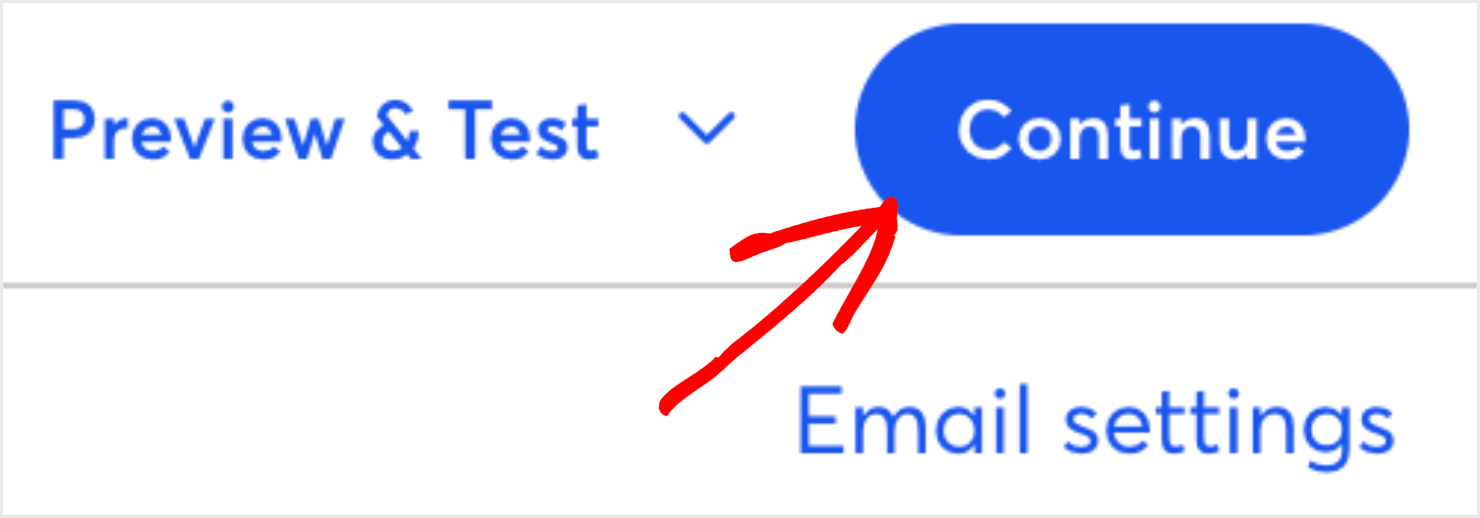
From there, you’ll just need to configure other details about your campaign, such as:
- Subject line
- Audience
- Sender info

Check it over for typos and that your email design looks the way you want it. Now your email newsletter will be ready to send!
If you need help writing more persuasive email copy, don’t worry.
I have got you covered.
Check out our 17 tips on how to write email copy that converts.
Once your newsletter is sent, you can see updated metrics such as open rates, click rates, and unsubscribes. Use this data to improve your newsletter strategy.
Did you get a great conversion rate on a specific piece of content? Send another newsletter next time with a similar topic or format.
You can also experiment with sending email subscribers to different landing pages and see how your conversion rates change as a result.
Finally, let’s go over how you can get more subscribers for your newsletter.
Related Content: 5 Best WordPress Newsletter Plugins for More Engagement
Build an Email List Using OptinMonster
Most successful email marketing campaigns start with a list full of qualified leads interested in what you have to offer.
After all, even the best email copy on the planet won’t convert if it doesn’t get seen.
So what you, as an online marketer, are supposed to do exactly to taste success with your email campaigns repeatedly?
That’s where OptinMonster comes into play:
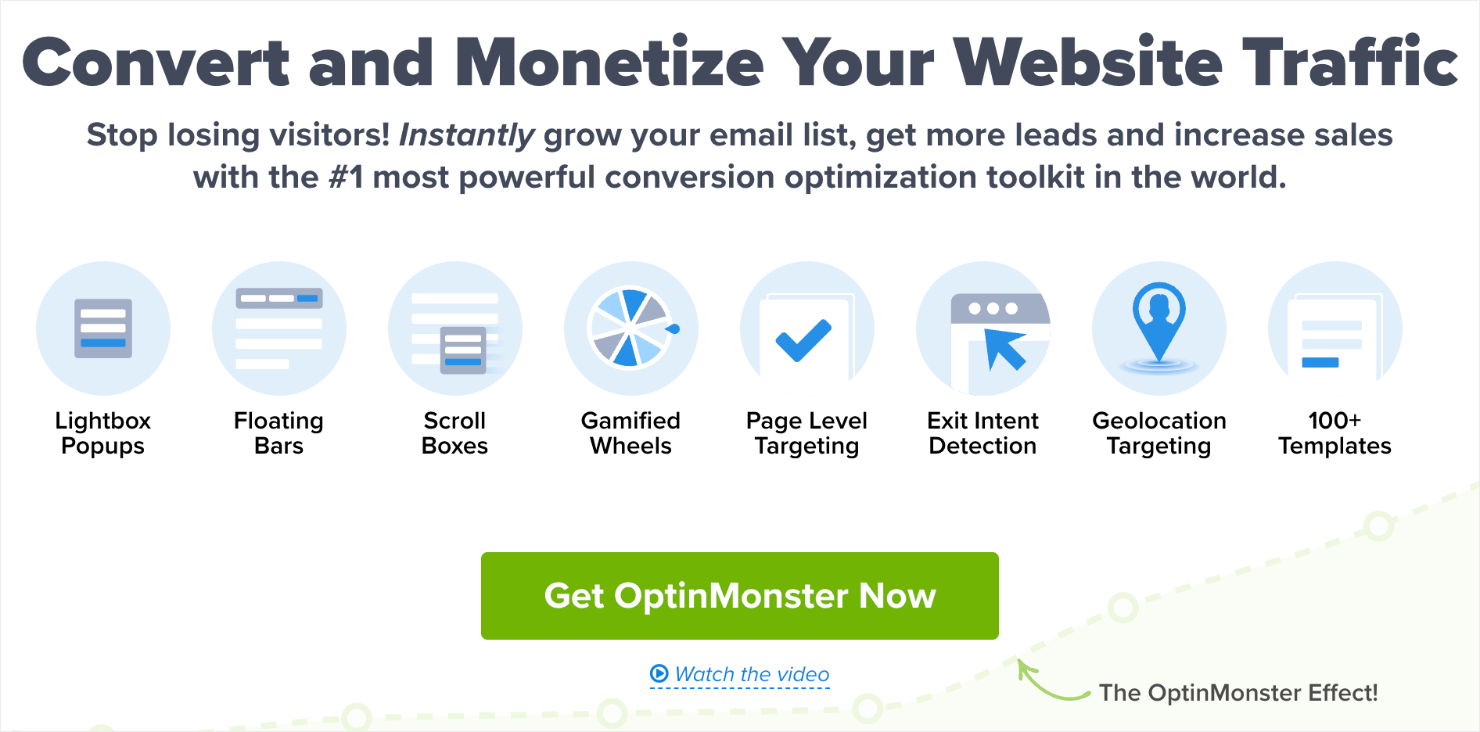
OptinMonster is the world’s #1 lead generation software. That means we’re the best at growing your email list through highly-targeted optin campaigns, like:
And many more.
These campaigns help you grow your email list fast. Here’s an example of what a simple lightbox popup might look like:
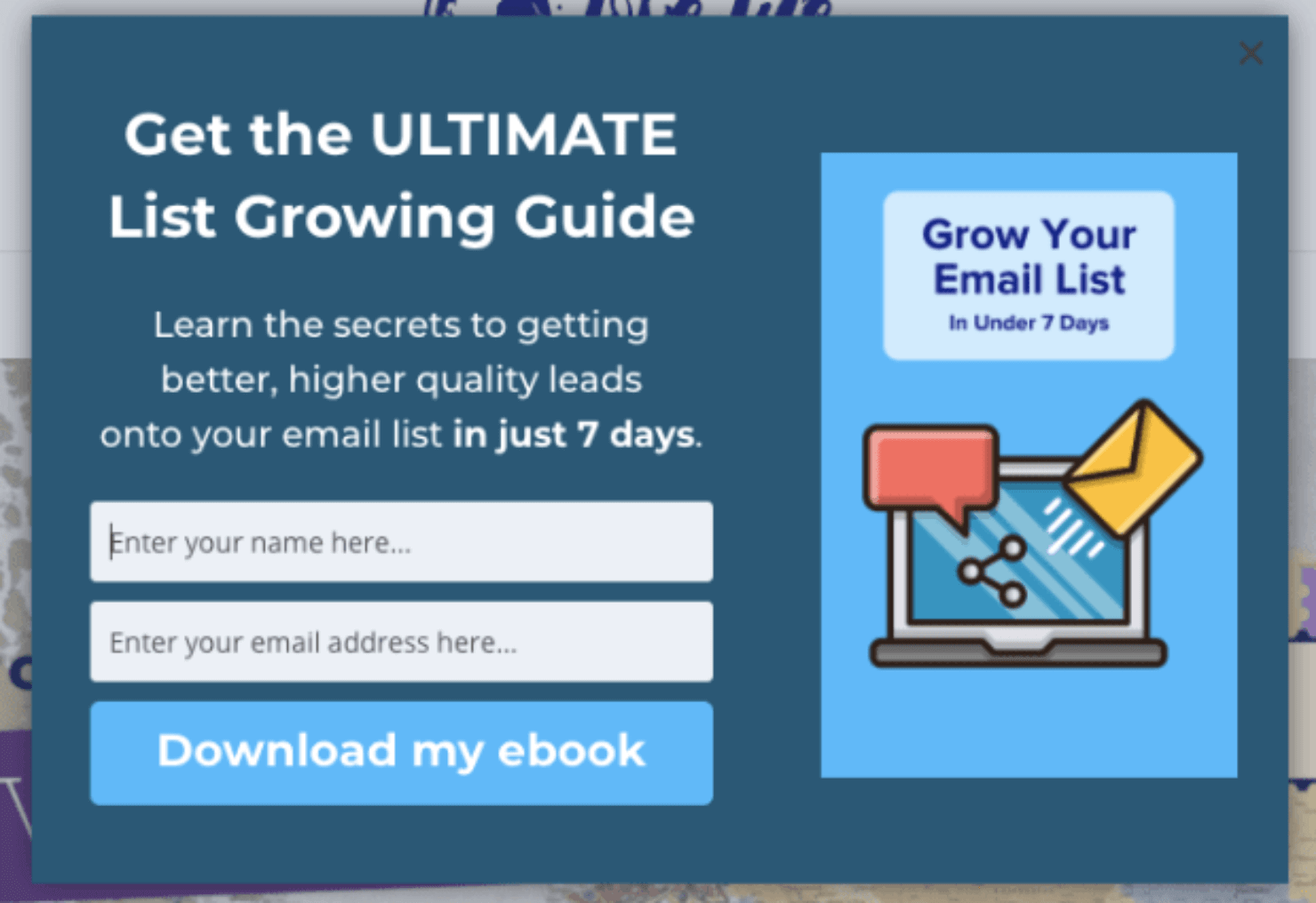
OptinMonster also comes with over 100 pre-made templates that help save you time and energy in the campaign creation process:
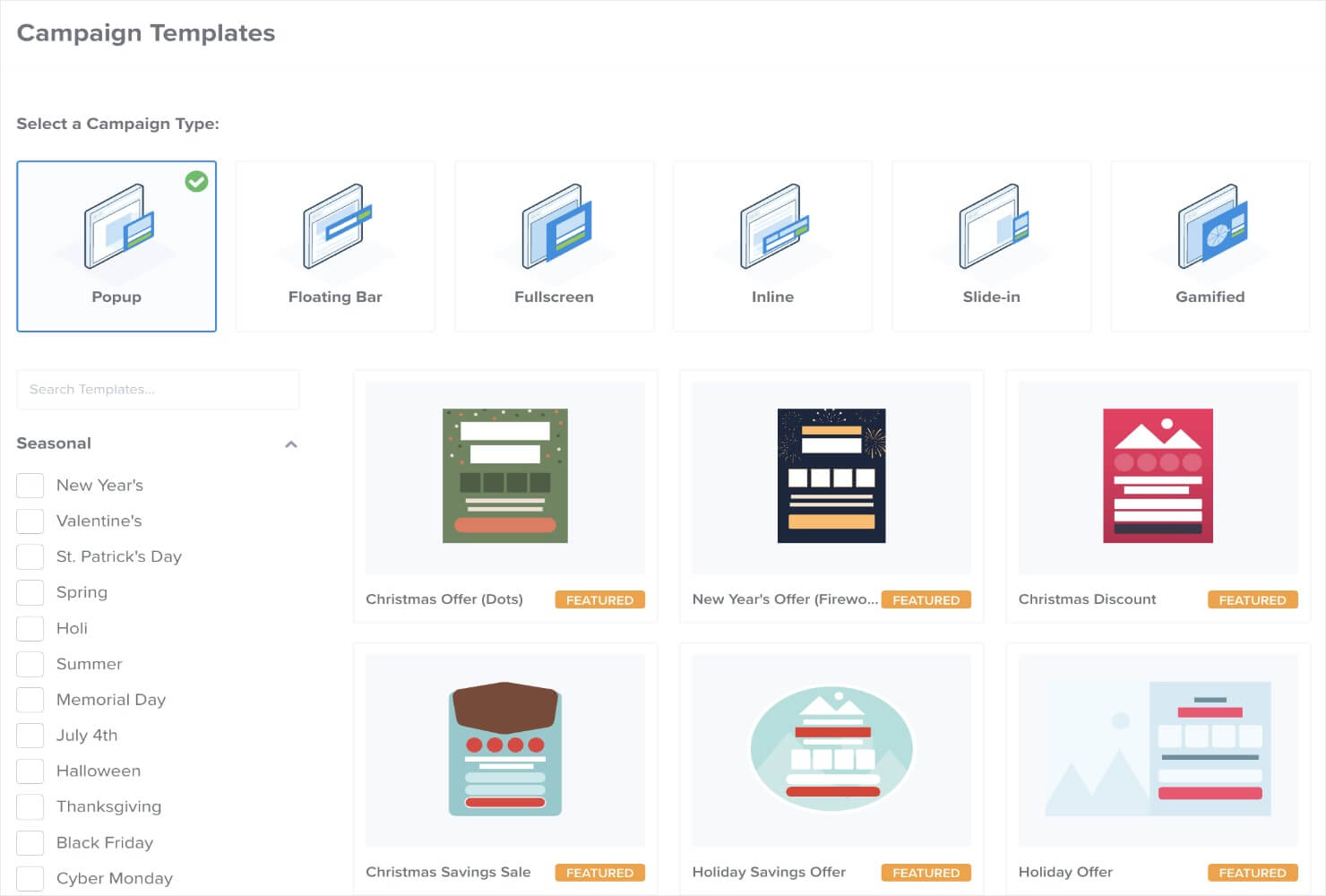
You can modify these campaign templates with an easy drag-and-drop visual builder.
This allows you to modify any text in your optin campaign or add new elements, such as:
- Videos
- Images
- Dividers
- Icons
- HTML
- And much more
And, again, everything can be done with just a few clicks:

But creating the campaign is only half the battle.
From there, you’ll need to target your special offers to the right people, in the right places, and at just the right times in their customer journey.
Some of OptinMonster’s most powerful targeting rules include:
- Exit-Intent® Technology: Recover abandoning visitors when they are about to leave your website.
- OnSite Retargeting®: Keep users engaged by displaying fresh campaigns to returning visitors.
- Geolocation Targeting: Personalize UX by targeting visitors by their physical locations.
- MonsterLinks™: Boost conversions by turning any link into a clickable email newsletter signup form.
These rules have gotten massive results for our clients. Just look at these case studies from OptinMonster customers:
- Human Food Bar Added 1800+ Leads Each Month
- SnackNation Adds 1200 Segmented Leads Every Week
- Shotkit Gets 40+ NEW Leads Every Single Day
But here’s the best part: OptinMonster seamlessly integrates with any email service provider on the market:
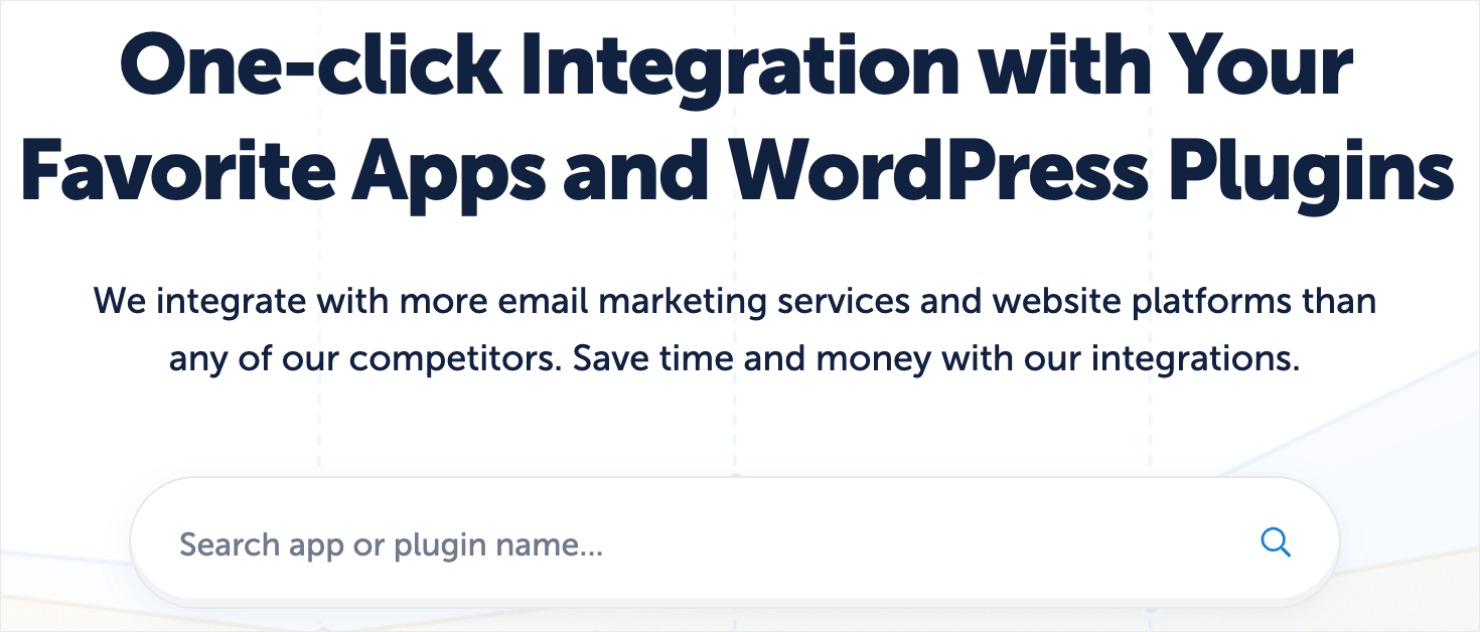
That means you can quickly sync your ESP and have new leads sent directly to the right contact list.
Then you can have your newsletters automatically sent to your new leads to convert them into happy (and paying) customers.
Ready to get started? Click below to sign up for your risk-free OptinMonster account today:
BONUS: Done-For-You Campaign Setup ($297 value)Our conversion experts will design 1 free campaign for you to get maximum results – absolutely FREE! Click here to get started →
If you found this guide on how to make an email newsletter helpful, you might also like the following posts:
- How to Write Email Copy That Converts
- 13 Simple eCommerce Marketing Tips to Skyrocket Your Sales
- Email Marketing for Beginners: A Step-by-Step Guide
- 8 Product Recommendation Email Examples to Drive Sales
- Webinars for Lead Generation: Tips and Strategies for Success
- What Is SEO? Find Out How Search Engine Optimization Really Works
- 45 Best Digital Marketing Tools to Boost Your Business

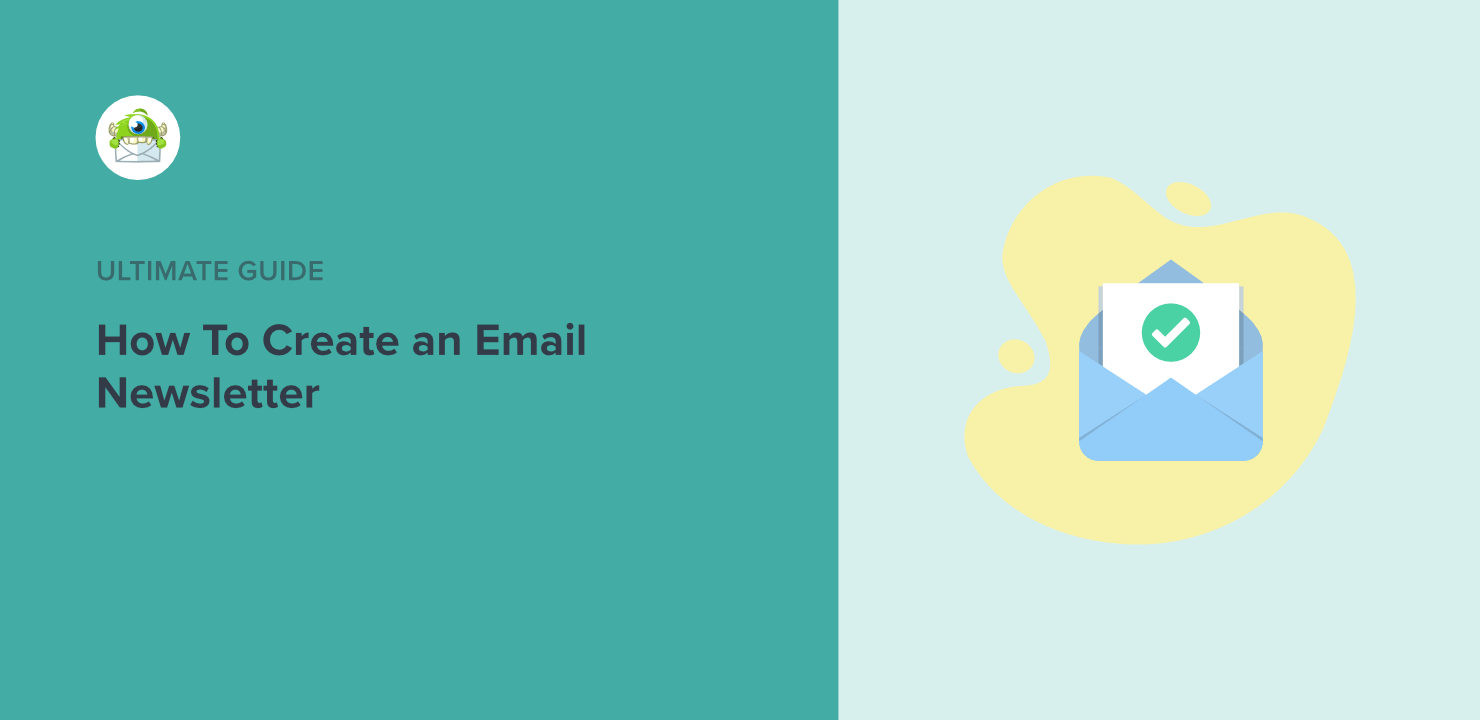
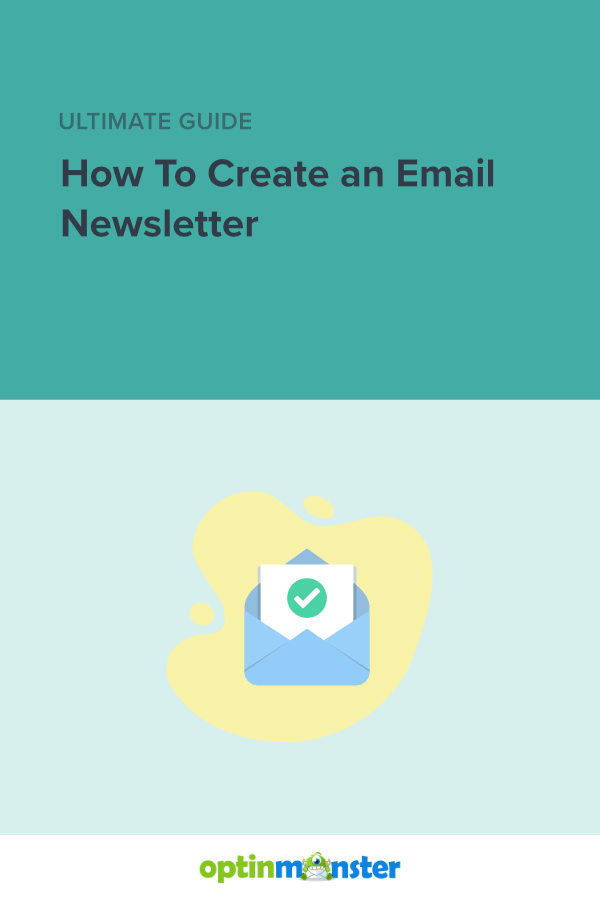









Add a Comment